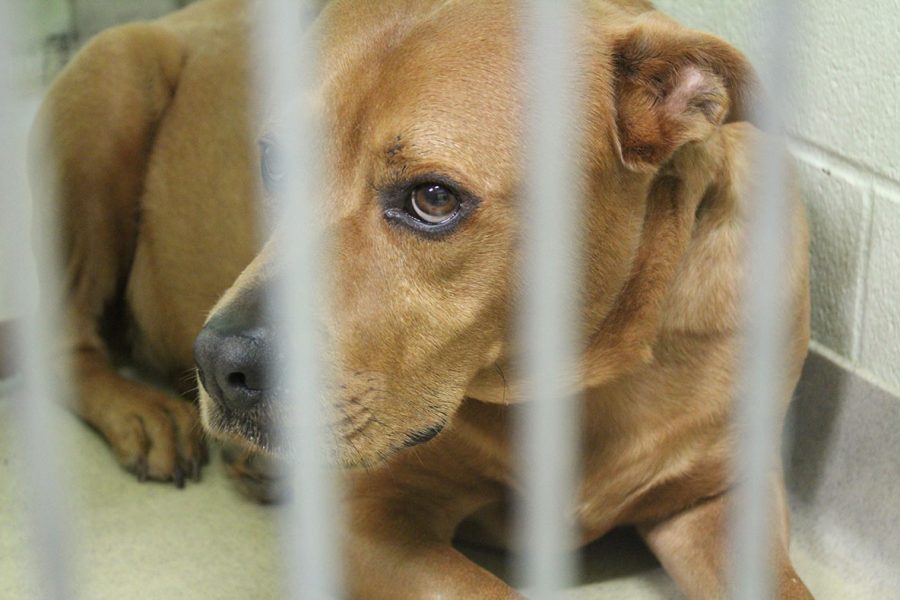The 7.6
September 27, 2016
Noises echoing. Barks. Whining.
Cages.
The initial view of the Humane Society for Hamilton County is one of cramped spaces and bustling volunteers. The first image seen upon walking inside is an overflow of animal crates in the lobby because the building simply isn’t large enough to house all the animals within the kennel
The Humane Society for Hamilton County (HCHS) has been active in Noblesville since 1984 and is the only true no kill shelter in Indiana–meaning all animals are taken in, and none are euthanized due to spatial issues. But that also means the shelter is almost always overcrowded. “The HCHS has run out of room. The building’s officials say…. they’re not sure what will happen next.
A large portion of the animals at the shelter are abandoned: their original owners had given them to the shelter for various reasons.
Senior Dani Wright is an intern at the HCHS and well aware of the problem the shelter is facing.
“Mostly, I see that owners surrender their animals because they’re not able to care for them, or get them as a puppy or kitten and then when they grow up and have no training, the owner doesn’t want them,” Wright said. “A lot of people just don’t think ahead of what an animal turns into when they aren’t little anymore and when they receive no training.”
The increasing amount of abandoned animals are crowding the shelter more than ever before.
Maggie Owens is the Manager of Community Outreach at the shelter, and she says the shelter is trying to find more space.
“[Expanding] is definitely in our future plans,” Owens said. “At this point, we do not have any land, but we are currently looking at possibilities.”
Most of the funding to the HCHS comes from donors, and it is often difficult enough to accumulate adequate revenue for the basic necessities of the shelter. Collecting enough to buy more land is a herculean task.
Not only does surrendering animals put stress on the shelter’s resources but it also has a negative impact on the animal itself, something the owner may not realize when they give the animal to the shelter.
“They lose trust in people,” Owens said. “Their hearts have been broken, and it takes our staff working day in and day out to gain the animals’ trust again.”
With this in mind, the shelter does their best to keep the animals out of a mental slump while reserving space for more animals in need.
“We have nearly 200 animals in foster homes at any time throughout the year,” Owens said. “We do this to give the animals a break, to allow them to recover from surgery, or just to make room for some other animals. We also have partnerships with places that allow us to send one dog a day to play with other dogs.”
The Humane Society attempts to give each animal individualized attention and care so they can be mentally and physically healthy again.
“All the animals really have their own personalities, and it’s really interesting to see how different each of them are and how much time and effort the staff puts into finding out what makes each animal comfortable,” Wright said.
The Humane Society for Hamilton County has a 98 percent placement rate, 62 percent greater than the national average. That’s 62 percent more pets in loving homes, and 62 percent more families with a pet with a story.
Read more about the Humane Society in More Pity, Less Bull and Gas Chamber Euthanasia.



